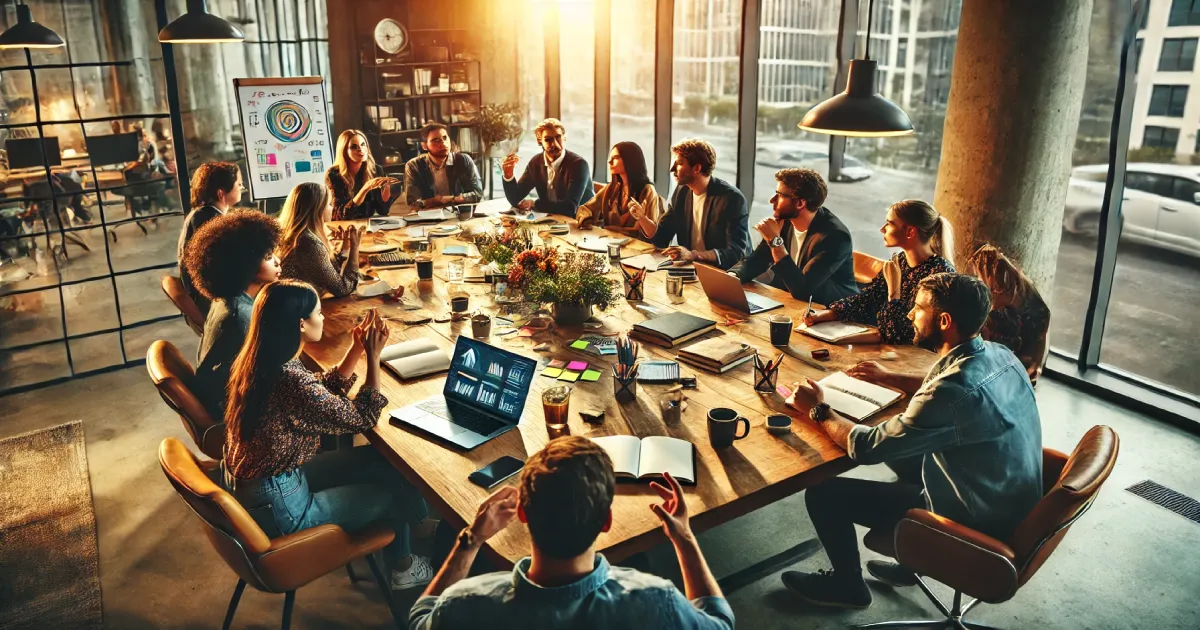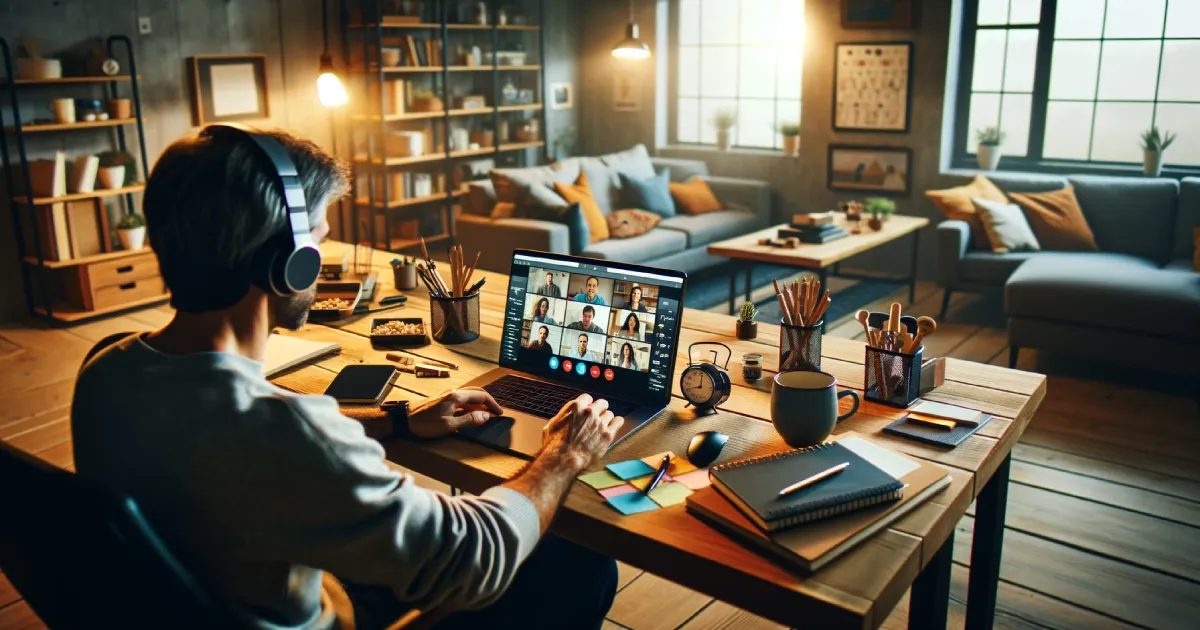6 Ways to Improve Your Meetings

Meetings are a crucial aspect of organizational communication and decision-making. However, they are often perceived as time-consuming and unproductive. By implementing effective strategies, meetings can become more focused, efficient, and valuable to all participants. Here are 6 ways to improve your meetings:
Way 1) Define Clear Objectives and Agendas

The Importance of Clear Objectives
Clear objectives are the pillars of a successful meeting. Without a defined purpose, meetings can easily go off-track, leading to wasted time and frustration. Objectives help in setting the direction and expected outcomes, ensuring that all participants understand the meeting’s importance and what is expected from them.
How to Set Objectives
- Identify the Purpose: Determine whether the meeting is for decision-making, brainstorming, information sharing, or problem-solving.
- Set Measurable Goals: Define what success looks like. For example, “By the end of this meeting, we should have a finalized project timeline.”
- Communicate Objectives: Share the objectives with participants beforehand to prepare them for the discussion.
Crafting Effective Agendas
An agenda serves as a roadmap for the meeting. It ensures that all relevant topics are covered within the allocated time and keeps the discussion focused.
- List Key Topics: Include all items that need to be discussed, prioritized by importance.
- Allocate Time Slots: Assign a specific amount of time to each topic to prevent overruns.
- Include Preparation Details: Indicate any documents or reports that participants need to review in advance.
Way 2) Optimize Participation and Engagement

Encouraging Active Participation
Active participation ensures that meetings are collaborative and productive. When attendees are engaged, they contribute valuable insights and feel more invested in the outcomes.
- Invite the Right People: Only include individuals who have a direct stake in the meeting’s objectives.
- Create a Safe Environment: Encourage open dialogue by creating a respectful and inclusive atmosphere.
- Use Interactive Tools: Employ tools like polls, Q&A sessions, and breakout rooms to stimulate participation.
Techniques to Enhance Engagement
- Icebreakers: Start with a brief icebreaker to set a positive tone.
- Rotate Roles: Assign different roles such as facilitator, note-taker, or timekeeper to keep everyone involved.
- Break Up Monotony: Incorporate short breaks or interactive activities to maintain energy levels.
Way 3) Leverage Technology Effectively

The Role of Technology in Modern Meetings
Technology can significantly enhance the efficiency and effectiveness of meetings. From virtual collaboration tools to advanced presentation software, the right technology can streamline communication and documentation.
Choosing the Right Tools
- Video Conferencing: Platforms like Zoom, Microsoft Teams, or Google Meet are essential for remote meetings.
- Collaboration Tools: Utilize tools such as Slack, Trello, or Asana for real-time collaboration and task management.
- Document Sharing: Ensure easy access to meeting documents with services like Google Drive or Dropbox.
Best Practices for Using Technology
- Test Equipment: Ensure all technology is working properly before the meeting starts.
- Provide Training: Offer training sessions for participants who are unfamiliar with the tools.
- Backup Plans: Have a contingency plan in case of technical difficulties.
Way 4) Improve Time Management

The Importance of Time Management
Effective time management is crucial for productive meetings. It ensures that all agenda items are covered without unnecessary delays and keeps participants focused and engaged.
Strategies for Better Time Management
- Start and End on Time: Respect the scheduled times to show that you value participants’ time.
- Set Time Limits: Assign specific durations to agenda items and stick to them.
- Use a Timer: Employ a visible timer to keep track of the time allocated for each topic.
Handling Interruptions and Off-Topic Discussions
- Parkinson’s Law: Be aware that tasks expand to fill the time available. Set strict time limits to avoid this.
- Parking Lot Technique: Create a “parking lot” for off-topic ideas to be revisited later.
- Facilitator Role: Assign a facilitator to keep the discussion on track and manage time.
Way 5) Encourage Collaborative Decision-Making

The Value of Collaboration
Collaborative decision-making leverages the collective expertise and perspectives of all participants. It leads to more informed and effective decisions.
Techniques for Collaborative Decision-Making
- Brainstorming Sessions: Encourage free-flowing ideas without immediate judgment.
- Consensus Building: Strive for a consensus where possible, ensuring all voices are heard.
- Voting Systems: Use voting tools for quick decisions on less critical issues.
Tools for Facilitating Collaboration
- Mind Mapping: Tools like MindMeister help visualize ideas and their connections.
- Survey Tools: Use platforms like SurveyMonkey or Google Forms for pre-meeting surveys to gather input.
- Real-Time Editing: Collaborative documents (e.g., Google Docs) allow for simultaneous editing and feedback.
Way 6) Follow Up and Measure Effectiveness

Importance of Follow-Up
The follow-up process ensures that decisions made during the meeting are implemented and that participants are accountable for their tasks. It also provides an opportunity to gather feedback and improve future meetings.
Effective Follow-Up Strategies
- Action Items: Clearly outline tasks, responsible individuals, and deadlines.
- Meeting Minutes: Distribute detailed minutes to all participants promptly.
- Feedback Mechanism: Collect feedback through surveys or follow-up meetings.
Measuring Meeting Effectiveness
- Review Objectives: Evaluate whether the meeting’s objectives were met.
- Participant Feedback: Use feedback to assess the meeting’s value and identify areas for improvement.
- Key Performance Indicators (KPIs): Track metrics such as attendance, participation levels, and the completion of action items.
Final Thoughts
Improving the quality of meetings can lead to better decision-making, increased productivity, and enhanced collaboration within an organization. By defining clear objectives, optimizing participation, leveraging technology, managing time effectively, encouraging collaboration, and following up diligently, you can transform your meetings from tedious to impactful. Implement these strategies and watch your meetings become more effective and rewarding for everyone involved.
Key Takeaways
| Section | Key Takeaways |
|---|---|
| 1. Clear Objectives and Agendas | - Set clear objectives. - Share detailed agendas. - Prioritize and allocate time. |
| 2. Participation and Engagement | - Invite necessary participants. - Encourage an inclusive atmosphere. - Use interactive tools. |
| 3. Effective Technology Use | - Use reliable video conferencing tools. - Implement collaboration tools. - Test technology before meetings. |
| 4. Time Management | - Start and end on time. - Set time limits for agenda items. - Use techniques like the parking lot for off-topic discussions. |
| 5. Collaborative Decision-Making | - Encourage brainstorming. - Strive for consensus. - Use voting for quick decisions. |
| 6. Follow-Up and Effectiveness | - Outline action items and responsibilities. - Distribute meeting minutes. - Collect feedback for improvement. |
Frequently Asked Questions (FAQs)
Q1. How can I ensure that everyone participates in the meeting?
To ensure active participation, invite only those who are necessary for the discussion, create a safe environment for sharing ideas, and use interactive tools to engage attendees.
Q2. What should I do if the meeting goes off-topic?
Use the parking lot technique to note off-topic ideas for later discussion and assign a facilitator to keep the meeting on track.
Q3. How can I measure the success of a meeting?
Measure success by reviewing if the meeting’s objectives were met, gathering participant feedback, and tracking KPIs such as attendance and completion of action items.
Q4. What are some effective icebreakers for meetings?
Some effective icebreakers include sharing fun facts, quick team-building activities, or starting with a positive round of appreciations.
Q5. How do I handle technical difficulties during a virtual meeting?
Prepare by testing equipment beforehand, provide training for participants, and have backup plans ready, such as alternative communication channels.
Q6. What is the best way to follow up after a meeting?
Follow up by distributing meeting minutes, outlining action items with deadlines, and collecting feedback to improve future meetings.





